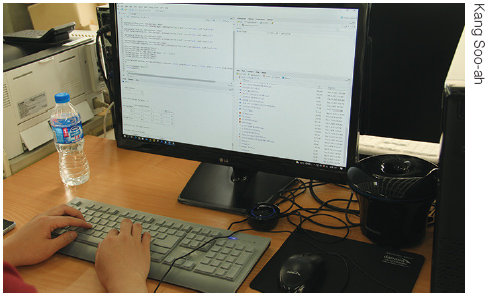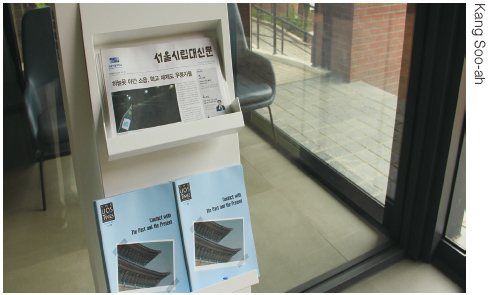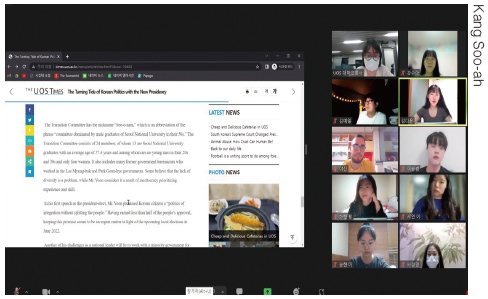For our readers who have been curious about the process through which The UOS Times is published and those who have loved and been interested in our articles for a long time, The UOS Times has decided to show all our readers how we make this magazine. Let us follow the publishing cycle of this 157th issue, and please keep tuned to The UOS Times continuously!
1. Item Meeting
The first task in publishing a new magazine is to decide on the items that will be shown in each kicker. A kicker is a sort of category in a magazine that shows the characteristics of the articles. Before holding an item meeting, reporters think of various items for each kicker and write them down on the item plan. Then, the reporters hold an item meeting, during which items are evaluated according to various selection criteria. After setting all the items for each kicker, we decide which reporter will write which article.
2. Writing the Articles
The reporters first briefly investigate their chosen items to plan for the articles by filling out an article plan, which asks for the overall structure and brief contents. Then, the editors give feedback on the plans to the reporters. Finally, the reporters gather news materials and begin writing the first drafts for about two weeks, considering the editors’ feedback. The reporters can hold interviews with the University of Seoul (UOS) students, professors, and school personnel, conduct a survey targeting UOS students, search for other articles from the established presses, or get information from official websites.

3. Editing
We edit our drafts three times. First, we do the peer editing, in which the first drafts are revised by the fellow reporters. Each reporter reads articles written by other reporters, corrects grammatical errors, and proposes some ideas about the contents. Second, the articles are edited by a proofreading company. A native English speaker corrects the article with expressions and words that are more natural and appropriate for the article. Finally, we show the articles to the professor who is in charge of the University Press and get feedback. In the case of an online issue, the process ends here, and the article is posted on our website (https://times.uos.ac.kr/).
4. Designing the Layout
The magazine design is done by a design company, but not from the very start. The reporters, who understand the contents of the magazine the best, create a layout of the page where their articles will be printed. The reporters design the page to match the theme of the articles and decide on the arrangement of the text and photos on the designated pages. When we pass the layout on to the design company, the company designs each page in an aesthetically upgraded version, as if breathing life into an inanimate object.

5. Proofreading the Pages
When a PDF file designed by the company arrives, it goes through three rounds of proofreading by the reporters. We take turns to review every page once to identify parts that are different from the original article, have incorrect notation, or parts that we want to add or subtract. It takes a very long time and requires much attention because we must check every part meticulously.

6. Publishing and Distributing
The final recension goes through the printing process, and 1,500 copies of The UOS Times are delivered to The UOS Times office. There are two ways of distributing these magazines. Currently, we are distributing the magazines by placing a certain number of copies on the distribution stands, which are usually located on the first floor of each building of UOS, to prevent the spread of COVID-19. Therefore, you may have found or can find this 157th issue on the distribution stands.

7. Evaluation
In the last process, the reporters hold an evaluation meeting. Each reporter talks about the articles they worked on. The self-feedback may include the reporters’ satisfaction and dissatisfaction with the article, the challenges they faced, or any noteworthy anecdotes. Then, other reporters share their thoughts regarding the article, such as suggestions, compliments, or questions.

It is no exaggeration to say that all our articles are processed with the sweat and tears of the reporters. All the reporters are devoted to providing UOS students with well-organized articles that are sometimes heavy and sometimes interesting. Our purpose is to make the students, especially international students who have difficulties in accessing needed information, get the latest news they need for their school life and further enhance their understanding of Korean society and culture. With such a clear goal, every moment of the issuance process is meaningful and makes us proud. We will always remember that all of this exists because of our readers. Therefore, allow us to express our deepest gratitude to our readers who read, support, and love The UOS Times!

Kang Soo-ah
sue020324@uos.ac.kr

